#Inchcape
Explore tagged Tumblr posts
Text
Inchcape Menyelesaikan Akuisisi Mercedes-Benz Indonesia, ke depannya Mengelola Operasi Distribusi & Perakitan Bersama Mitra Lokal : Indomobil Salim Group
Inchcape Menyelesaikan Akuisisi Mercedes ., salam pertamax7.com, Inchcape Menyelesaikan Akuisisi Mercedes-Benz Indonesia, ke depannya Mengelola Operasi Distribusi & Perakitan Bersama Mitra Lokal : Indomobil Salim Group Link ponsel pintar ( di sini ) Salam Mobil Eropa Mania. Ada info resmi dari pulau Jakarta, Indonesia, 2 Oktober 2023 – Inchcape Plc (‘Inchcape’), distributor otomotif terdepan di…

View On WordPress
0 notes
Text
Bridgetown, Barbados. Simpson Motors was acquired. Taxpayers voted for Inchcape Barbados.
https://youtu.be/Rjxl6VF3KRE
youtube
Hybrid. Electric. All white owned. Naked!!
0 notes
Text
Perhaps not that disconnected from the news above, BYD has also just entered Estonia. The first two BYD stores have opened there and four different BYD vehicle models can be ordered. Those models are the BYD Seal, Song Plus EV, Song Plus DM-i, and Dolphin.
BYD partnered with the large international dealer group Inchcape Motors to open its first two stores(..)
#Estonia#BYD#ev sales#demise of legacy automakers#Baltic States#Inchcape Motors#Chinese EVs#ev adopttion#russian defeat
2 notes
·
View notes
Text
Back in 2021 the Science Museum promoted their “never been seen” project, where you could be randomly assigned an item from their online collection which had zero clicks—then you got a pixelated image you could click on to get details—it was a nice way of engaging people with unappreciated items
I clicked and got a rather unexciting looking oblong
I clicked on it and got a calling card which was described as belonging to Japetus Steenstrup
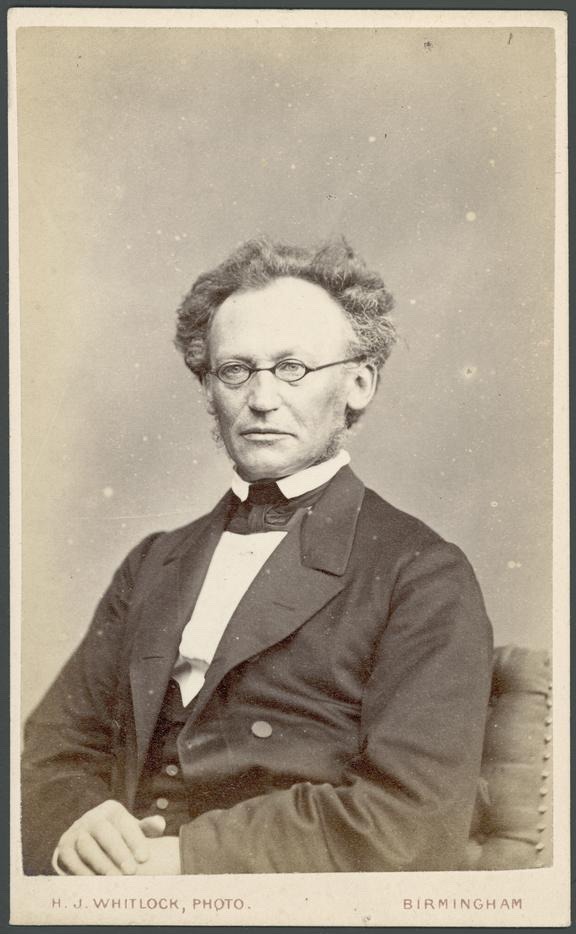
Carte de Visite portrait of Japetus Steenstrup
Now call me weird (you wouldn’t be the first) BUT that name rang a bell, the sort of bell Sir Ralph the Rover might hear ringing his knell*
i checked, and then I contacted the Science Museum to let them know that this Japetus was no other than Kraken-man!
And the Science Museum (to my utter delight) let me know they’d updated their description accordingly:

Yay Science Museum!
*Sir Ralph the Rover tore his hair,
He curst himself in his despair;
The waves rush in on every side,
The ship is sinking beneath the tide.
But even is his dying fear,
One dreadful sound could the Rover hear;
A sound as if with the Inchcape Bell,
The Devil below was ringing his knell.
Poem: Inchcape Rock, Robert Southey
4 notes
·
View notes
Text
DEEPAL S07 Electric SUV Price and Detail a Bit of a Surprise
#shorts#cars#deepal S07#gay boys#gay car#gay Car News#gay car reviews#gay cars#gay life#gay life style#gay men#gaycarboys#Inchcape Australasia#shorts feed#shorts video
0 notes
Text
DFSK Glory Perú llança campanya “Senyals que van amb tu” dirigida a persones amb discapacitat auditiva
surtido.pe Bruno Cárdenas, Cap de Màrqueting de la marca DFSK Glory afirma: “Estem orgullosos de llançar aquesta campanya, la qual és un primer pas per a fomentar la igualtat i el respecte cap a tots els nostres clients…[…] (surtido.pe)

View On WordPress
0 notes
Text
Rooms in a Lighthouse
Although the buildings of lighthouses differ depending on their location and purpose, they generally have common components. However, a distinction must also be made between a lighthouse station consisting of the lighthouse and all the outbuildings such as the lighthouse keeper's house, the fuel house, the boathouse and the building for fog signalling, i.e. a land station, and an inhabited lighthouse as it was found at sea.
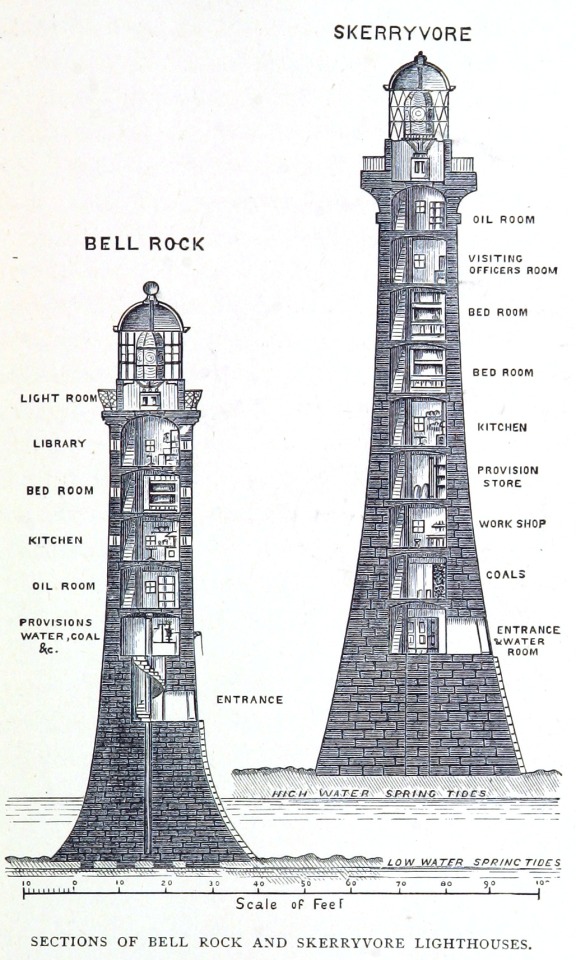
Sections of Bell Rock and Skerryvore Lighthouses, date 1884
Skerryvore is a remote reef that lies off the west coast of Scotland, 12 miles (19 kilometres) south-west of the island of Tiree. Skerryvore is best known as the name given to the lighthouse on the skerry, built with some difficulty between 1838 and 1844 by Alan Stevenson.
The Bell Rock Lighthouse, off the coast of Angus, Scotland, is the world's oldest surviving sea-washed lighthouse. It was built between 1807 and 1810 by Robert Stevenson on the Bell Rock (also known as Inchcape) in the North Sea, 11 miles (18 km) east of the Firth of Tay. Standing 35 metres (115 ft) tall, its light is visible from 35 statute miles (56 km) inland.
If you are only dealing with an inhabited tower, you usually have the following rooms in it. Please note that, apart from the lantern room, there is no standardised scheme and the rooms were often arranged differently.
The lantern room is the glazed housing at the top of the lighthouse that contains the lamp and the lens. The glass panes are held in place by vertical or diagonal metal rungs. A lightning conductor and an earthing system, which are connected to the metal roof of the dome, ensure that any lightning strikes are safely discharged.
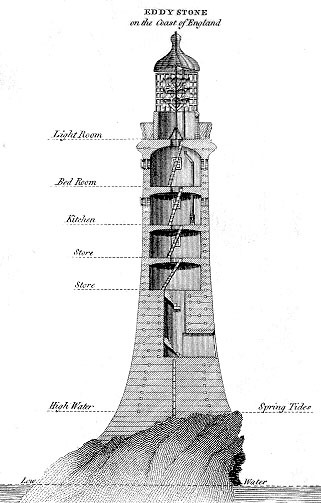
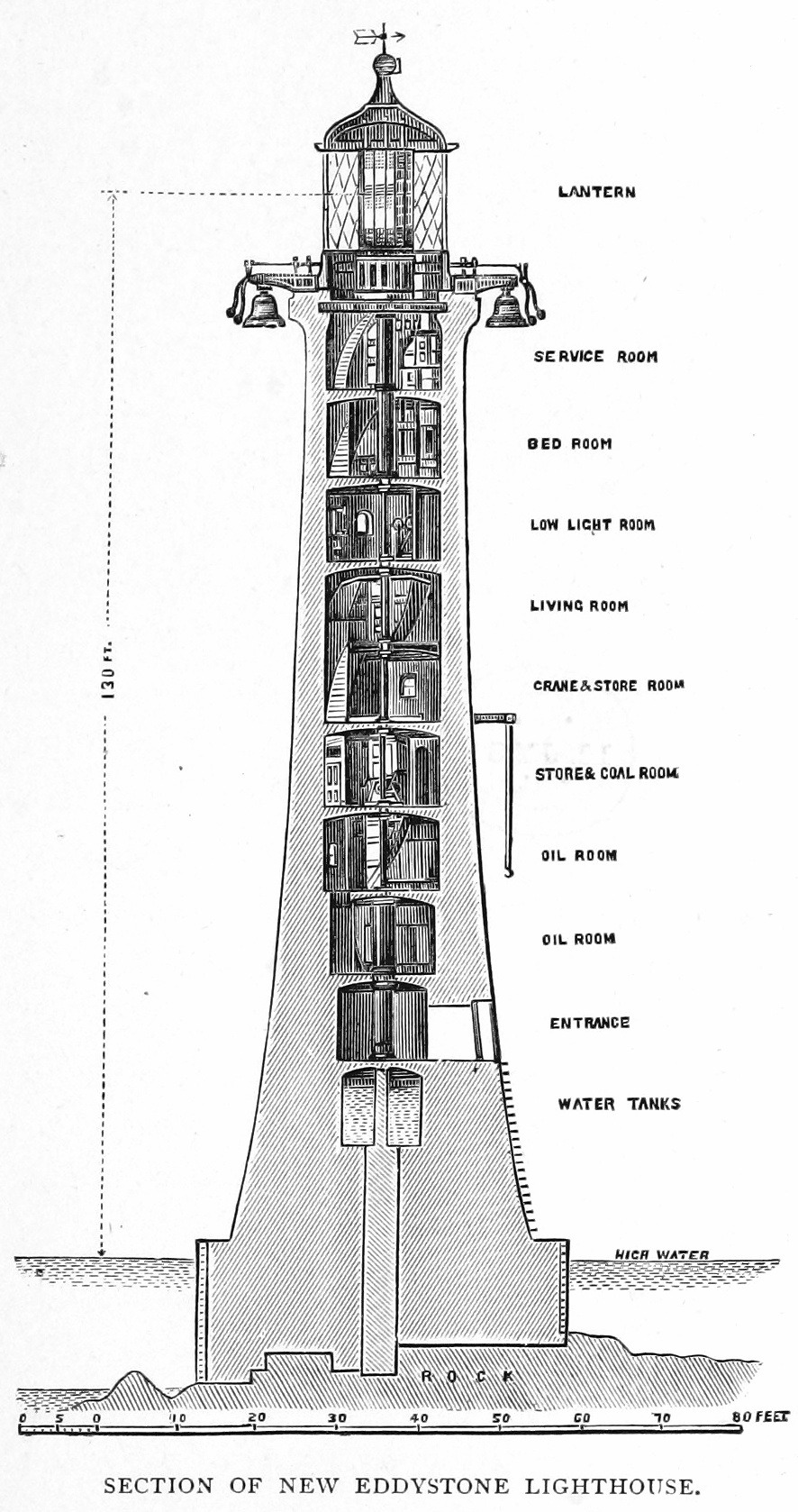
Sections of the Eddystone Lighthouse of 1759 and 1884
Immediately below the lantern room is usually a guard room where fuel and other supplies were stored and where the keeper prepared the lanterns for the night and often kept watch. The clockwork (for turning the lenses) was also located there. On a lighthouse there is often an open platform, the gallery, outside the watchroom (main gallery) or the lantern room (lantern gallery). It was mainly used to clean the outside of the lantern room windows. Below this was a living room, bedroom, possibly a separate kitchen, if not a cooking area was accommodated in the living room. In addition, there were often several storage rooms, an oil room (where the oil for the lantern were storaged) and a coal room. And if you're wondering where the bathroom was - well there wasn't one, there was a wash bowl, possibly a wooden tub for an occasional bath, but rarely, and chamber pots in the bedroom.
Life in a lighthouse at sea was not easy and managed to bring many an old sea dog to his knees. The lighthouse keepers on land had it much easier.
2K notes
·
View notes
Text
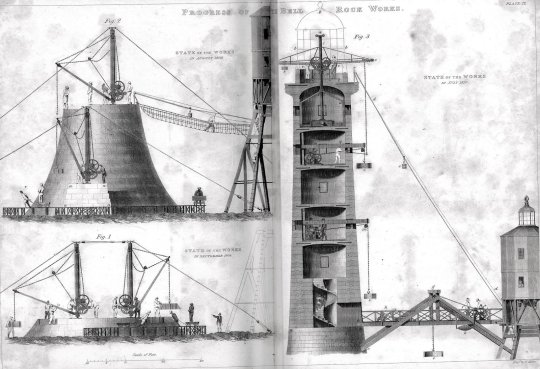


The Bell Rock Lighthouse, off the coast of Angus, was first lit on the 1st of February 1811.
Over 200 years after it was first built, the Bell Rock Lighthouse still stands - proudly flashing its warning light. Eleven miles out to sea off the east coast of Scotland, it is a remarkable sight - a white stone tower over 30m (100ft) high, rising seemingly without support out of the North Sea.
In fact, it is precariously poised on a treacherous sandstone reef, which, except at low tides, lies submerged just beneath the waves.
The treacherous reef on which it stands is in the North Sea, between the Firths of Forth and Tay, some 12 miles south of Arbroath and 14 miles south east of St Andrews. The red sandstone outcrop is 435m long and the lighthouse is founded on the main section, 130m long and 70m wide, and only 1.2m above the surface at low water spring tide.
The reef was known originally as Inchcape Rock or Cape Rock. According to tradition, in the 14th century the Abbot of Aberbrothok (Arbroath) placed a floating bell on it to warn mariners, hence its present name. Legend has it that sometime later a Dutch pirate removed the bell but he was later shipwrecked and perished on the same reef. The rocks were dangerous to ships sailing along the east coast of Scotland and by the end of the 18th century the need for a lighthouse was clear.
A severe storm in December 1799, in which about 70 vessels were wrecked, prompted Stevenson to propose a beacon-style lighthouse on six cast iron pillars.
Stevenson submitted a scale model of his idea to the Northern Lighthouse Board in summer 1800 — accurate physical modelling was to become something he often employed subsequently on important projects.
Stevenson drew the inspiration for his lighthouse design from the Eddystone Lighthouse, off the coast of Cornwall.
Built 50 years earlier by John Smeaton, this was a milestone in lighthouse design. Shaped with the now classic wide base, tapering to a narrow tower (Smeaton had modelled it on an oak tree he had witnessed defying a storm), it was the only off-shore structure that had until then managed to survive for any length of time against the constant battering of the seas.
Stevenson elaborated on this design. His lighthouse would have to be higher, over 30m (100ft), if it was to survive the cruel waves of the North Sea. He also incorporated more efficient reflectors, using the latest oil lighting technology, which would make his beacon the brightest yet seen.
But the Northern Lighthouse Board rejected the plan outright; in their eyes Stevenson was attempting the impossible, and besides, it was going to cost the huge sum of £42,685 and 8 shillings.
The rock had to claim another victim before the Board revisited Stevenson's plans. In 1804 the huge 64-gun HMS York was ripped apart on the rock, with the loss of all 491 crew. The NLB could delay no longer. Britain's most eminent engineer, John Rennie, was invited to give his advice.
Rennie had never actually built a lighthouse, but the Board was so impressed by his record that he was given the job of chief engineer. Robert Stevenson was to work as his resident engineer.
History does not record Stevenson's reaction to the news, but it must have come as a bitter blow to this ambitious young man. What history does record is that the structure on Bell Rock came to be known not as Rennie's but as Stevenson's Lighthouse.
Work started in 1807 and what followed was a four-year epic, with work severely restricted by tides that on occasion submerged the rock’s surface to twelve feet. The offshore activity only proceed during the summer months, and even then only with difficulty. Poor weather in the summer of 1808 allowed only 80 hours of work were completed.
To avoid time lost in shuttling workers to and fro Stevenson built a temporary wooden “Beacon House” on the rock and this served as both a base of operations and living quarters for fifteen men. As this structure (see illustrations) was also exposed to storms during the construction period, residence on it must have in itself have been a nightmare. During the winter months Stevenson kept his crews busy ashore, dressing the individual granite blocks needed for the tower. The total number required was some 2500 and all were drawn to the dockside by one of the unsung heroes of the project, a horse called Bassey.
The lighthouse came into service in 1810 and was to fulfil its purpose very effectively. Between then and 1914 only a single ship was lost on the rock, a steamer called the Rosecraig that ran aground during a fog in 1908, fortunately without loss of life.
The light has now operated for 212 years and has undergone many significant and ingenious upgrades and changes, some of them even being undertaken by non-Stevenson engineers. It was a manned light for 177 years, the lives of those keepers on their temporary Alcatraz being a source of equal fascination
The lighthouse was manned until 1988, when the station turned automatic and the last men were withdrawn.
53 notes
·
View notes
Photo

Pirate Ralph the Rover cutting the Abbot of Arbroath's warning bell from Scotland's Inchcape Rock in the 14th century.
Source details and larger version.
It rings true: my collection of bells ringing through time.
15 notes
·
View notes
Text
Massive floods cause chaos in southern Brazil

Floods that have killed at least 85 people in Brazil’s Rio Grande do Sul have completely halted operations in three ports as well as put a stop to nearly all logistical operations in the state.
According to the Civil Defense of Rio Grande do Sul, over 130 others are still missing, over 19,000 people have been made homeless, with around 150,000 displaced in nearly 350 municipalities.
Inchcape Shipping Services claimed that the ports of Porto Alegre, Rio Grande, and Tramandai were completely shut down and that the heavy rains flooded the state capital of Porto Alegre with the river level five meters above the usual level.
The Porto Alegre’s Salgado Filho International Airport is also flooded. All discharge and loading operations in the port are stopped with no forecast for return while all flights are cancelled. The airport is also used for crew changes in the ports. With the floods closing both the airport and the ports, crew changes are on hold until further notice. Transport links and energy supplies have been cut as well.
Continue reading.
#brazil#brazilian politics#politics#environmental justice#rio grande do sul floods 2024#mod nise da silveira#image description in alt
11 notes
·
View notes
Text
Technician - Jaguar | Land Rover
Inchcape is the leading global automotive distributor operating in more than 40 markets. We partner with some of the biggest brands in the business to power better mobility today and in the future. Our diverse global team of over 20,000 t… Apply Now
0 notes
Text
Why Dubai is a Top Destination for Scuba Diving Enthusiasts
Dubai, known for its luxurious lifestyle and towering skyscrapers, is also a haven for scuba diving enthusiasts. The city's stunning coastal waters host a vibrant marine ecosystem and a collection of thrilling dive sites, making it a must-visit destination for divers of all skill levels.
The Thrilling Underwater Ecosystem
Vibrant Marine Life The underwater world of Dubai is teeming with diverse and colorful marine life. From the playful schools of fish to the majestic rays and turtles, the aquatic biodiversity here is simply breathtaking. The warm waters of the Arabian Gulf provide an ideal environment for corals and fish to flourish, making every dive a unique adventure.
Exciting Dive Sites Dubai offers several world-class dive sites, including shipwrecks, artificial reefs, and natural formations. For example, the famous Inchcape 1 wreck is a popular spot for experienced divers, while shallow coral gardens cater to beginners. Each site presents new challenges, ensuring that divers return time and again to explore deeper.
World-Class Diving Facilities
Professional Training and Equipment Dubai is home to internationally accredited diving schools that provide expert training and state-of-the-art equipment. Whether you’re a first-time diver or a seasoned professional, you’ll find diving schools offering tailored courses to suit your level of expertise. With highly qualified instructors guiding you, safety is always a top priority.
Accessible Dive Locations Dubai’s dive locations are easily accessible, whether you're staying in the heart of the city or at one of the luxurious resorts along the coast. The convenience of booking dive trips through your hotel or local operators ensures that your experience is seamless, allowing you to focus entirely on the thrill of the dive.
To know more, visit https://joinhabibi.com/blogs/a-beginner%E2%80%99s-guide-to-scuba-diving-experiences-in-dubai
0 notes
Text
Mercedes-Benz Tegaskan Tak Ada Kerja Sama dengan Pindad untuk Maung
Logo Mercedes-Benz Jakarta (Riaunews.com) – Inchcape Indomobil Distribution Indonesia, distributor dan produsen Mercedes-Benz di dalam negeri, mengatakan tak memiliki kerja sama dengan Pindad terkait penggunaan komponen di Maung. “Sejauh ini belum ada skema kerjasama antara Mercedes-Benz Indonesia dengan Pindad, sehingga kami tidak bisa memberikan komentar lebih jauh perihal ini,” kata Direktur…
0 notes
Text
Ķīnas elektroauto milzis BYD (Build Your Dreams) un Inchcape Motors Igaunijā uzsāks BYD transportlīdzekļu tirdzniecību Igaunijā jau šogad, jaunā zīmola dīleru salonus atverot 11.decembrī Tallinā, Paldiski maantee 108, un Tartu, Kalda tee 13.(..)
[Breaking NEWS!] BYD's first dealerships in the Baltics will be in Tallinn and Tartu
Chinese electric car giant BYD (Build Your Dreams) and Inchcape Motors in Estonia will start selling BYD vehicles in Estonia already this year, opening new brand dealerships on December 11 in Tallinn, Paldiski maantee 108, and Tartu, Kalda tee 13.(..)
P.S. Very good news! The BYD brings LFP battery technology to Baltic states...! The legacy automakers are so horribly inefficient that even with EU taxes EVs made by Chinese companies are competitive in the Baltic States...
Volkswagen's arrogant attitude towards affordable electric car mass production technologies and LFP batteries literally destroys it...Dongfeng and GWM dealers work in Latvia...
#Estonia#BYD#ev adoption#affordable EVs#competition#electric car#electric vehicle#Volkswagen#russian defeat#Dongfeng#GWM#China#russian demise#trump's defeat
1 note
·
View note
Text
FOURTEEN
The Stinchar, descending from its interior heights, winds through a vale of which the scenery is, in my mind, unequalled, in wild beauty, by anything else in Scotland; and falls at last into the sea at Ballantrae.
ROBERT HERON, A Topographical Description of Scotland (1797)
AS OUR BUS rattles up the road that hugs the western sea, a large vehicle with four laughing men in it whistles past us towards Kennedy’s Pass, fishing rods sticking out of a side window like aerials. They may well just be off the Irish boat.
Fanning its tail behind it like a hand of cards, a kestrel floats on the breeze above the raised beach of Ballantrae and rides the sky beyond one of the oldest industrial buildings in Scotland, a windmill built in 1696. The weather here on the south Ayrshire coast has downgraded itself from unsettled to changeable and six stolid cows gather at a gate, clearly expecting rain more than the Met Office does.
A madcap aristocrat used to fly a biplane on the breezes here. In March 1928 Time magazine wrote of the daughter of Viscount Inchcape, head of P & O Ferries:
‘Dark, not unattractive, graceful, habitually well-gowned and bejeweled, Miss Mackay was the envy of most women. Her silver Rolls-Royce flashed by at breakneck speed. Her horses invariably galloped.’
Elsie Mackay was born in colonial India and was bred on the family estate at Glenapp castle, a mile and a half south of Ballantrae (the castle is reportedly where Churchill and Eisenhower planned D Day). In 1917 she eloped with Denis Wyndham, a South African actor, and after the war she became the silent screen actress Poppy Wyndham. The marriage lasted five years, whereupon she was welcomed back into the family fold. Her father prayed she would buckle down to the cushy life of an aristocrat, but she gained her pilot’s licence in 1923 and, five years later, she made off with a one-eyed war hero, Capt. Walter G. R. Hinchcliffe, to fly across the Atlantic against the prevailing winds. They took off from snowbound Cranwell aerodrome in England, but they were never seen again beyond the Irish coast. A crowd of 5,000 stood all night at Long Island, New York, waiting for them, but they never landed. Only a slither of debris was ever found. While they were missing, the New York Times stated: ‘Every luxury money commands has not satisfied Lord Inchcape’s daughter in her thirst for adventure.’


Time reported three months later: ‘Since the death of Elsie Mackay is now presumed, her father, mother, brother and sisters presented her residual estate of £500,000 to the British Exchequer, last week, announcing that they ‘have no desire to profit from her death’.’
Shrubs were planted in Glenapp, so that the name Elsie could be read from the sky. Nature has erased her name, but she is commemorated in a stained-glass window in the chancel of the church at Ballantrae. There is the inevitable ghost story. There are some who claim the steel-nerved socialite haunts the corridors of Glenapp Castle. The industrialist James Hunter built the castle as his home on ground he had purchased from the Earl of Orkney. It passed to the wealthy Mackays in 1917. In 2015 the castle was acquired by Paul and Poppy Szkiler. Paul is the Chairman of the Truestone Group. They have upgraded it into a luxury hotel.


As if to pay homage to the late aviatrix, the Monte Carlo rally passed through Ballantrae in 1961. It was the one and only time: the fact that an over-zealous policeman charged 10 drivers with speeding may have had something to do with that.
Nowadays visitors to the hotel can sail up and down the rugged coast accompanied by the resident falconers and Ripley, the resident sea eagle.
Fishing and farming fed the villagers of Ballantrae for generations, as did wholesale smuggling, and Robert Burns met many local smugglers when he was a boy in Ayrshire; he wrote to Dr John Moore, of Mauchline, of the smugglers’ ‘swaggering riot and roaring dissipation’. In his History of the Counties of Ayr and Wigtown (1863) James Paterson tells us boats with 30 guns had once landed their cargoes in Ballantrae, while a hundred ‘lintowers’, some of them armed with cutlass and pistol, conveyed the goods ‘by unfrequented paths through the country and even to Glasgow and Edinburgh’. Cellars were dug in kitchen floors along the coast and there were holes and caves stuffed with contraband. There is an apocryphal story that a farmer’s wife made porridge with brandy one morning and only realised her mistake when there was a noisy demand for seconds.


Ballantrae, whose original name was Kirkcudbright-inner-Tig, is a now a one-horse town along the A77, albeit with a sand and shingle beach and hulking dark rocks haunted by terns, sandpipers, cormorants and kittiwakes. The laybys here attract twitchers in quest of rare birds. Porpoises, grey seals and basking sharks pop up too now and then, but they are hiding today.
I’d a nap in a layby along this bracing shoreline after watching shags shimmying across sea-sculpted stones; I woke to a seabird symphony, and the daybreak splendour of the islet of Ailsa Craig surfacing from the water. Alas, I hadn’t dandered ten yards along the foreshore before I stood on a blackened heap of empty pop cans, wet wipes, polystyrene receptacles, half-consumed packets of a snack called Ringos, and what looked suspiciously like a condom. Who would defile this splendid coastline? What bampottery drives you to set fire to lemonade tins? And what would Elizabeth Anderson Gray have made of it all? It was along these picturesque shores that this local heroine spent her whole life collecting and classifying fossils. By the time of her death in 1925 she had extensive collections in several British museums.
Think The Wrong Turn meets The Texas Chainsaw Massacre meets The Silence of the Lambs and you’re getting close to the tale of Sawney Bean, who, tourism marketeers have long informed us, lived in a cave north of Ballantrae; that he was the head of a family of mutant monsters who waylaid travellers, robbed and murdered them, and then ate the evidence. There are tales of caves full of pickled and salted arms, legs, and other human body parts. Reportedly the male fiends were finally dismembered in front of the women, then the women and girls were burnt in a bonfire, but there is no historical record. There is a theory that the arch-Unionist and English spy, Daniel Defoe, put the story out to disparage Scotland.
An anonymous contributor to the online history group Ayrshire Notes observed in 2002: ‘The story cannot be traced beyond the 18th-Century equivalent of the Sunday Sport, so is it worth pursuing at all? I can think of no sound reason for doing so other than gratuitous and morbid titillation. What is most reprehensible about all this is that the myth is popularized as part of a despicable conspiracy of the heritage industry, tourist agencies and local authorities to turn parts of Scotland into little more than gruesome theme parks. If peddling the Sawney Bean story attracts tourists to Carrick, surely, they are the wrong kind of tourists.’
Ouch!

There is a long history of tramps, misfits, and disillusioned loners giving two fingers to the rat race to reinvent themselves, to become hermits; and several have found their havens in caves along Scottish shores. For 30 years, for example, Henry Ewing Torbet lived the quiet, simple life of a troglodyte in Bennane Cave, which is a stone’s throw from the one associated with the Beans. He was tall, straight-backed, with a long black beard and shaggy eyebrows – a colourful character, so well-liked that the locals put up a small cairn above his beloved shore as a memorial to him when he died of pneumonia after freak weather in 1983. He’d been a refugee from banking (and marriage), who had drifted around Scotland, and been in and out of jail for begging, at one time throwing a bag of flour and two bars of soap at a shopkeeper who had refused to serve him when he did not have ration coupons. At Ballantrae he was treated kindly, although he never spoke much. He lived on rabbits and potatoes, built fires from driftwood, and did odd jobs, although, in his Travels in Galloway, Memoirs of South-west Scotland, Donald McIntosh tells us: ‘He was as cunning as a hill fox and the very mention of the word work was enough to make him physically ill.’
McIntosh had heard that Torbet, who called himself Snib Scott, was offered soup and scones for chopping firewood. He had told the housewife: ‘Missus, when a man’s belly is empty, he doesnae have the strength to work.’ Two plates of broth and 10 cheese scones later, he got up and made off, remarking with a belch: ‘Missus, when a man’s belly is fu, he doesnae need to work.’
It is said that, after trudging across the hills of Glenapp into Galloway, he tried to cadge from a young farmer at Newton Stewart. The farmer and his friends washed, scrubbed, shaved, suited and booted Snib, and plied him with food and whisky. They took this clean-shaven, well-dressed gentleman to the young farmers’ ball and introduced him as a wealthy visiting farmer; and many ladies swarmed about him. The day after the night before, the joke was on the farmer; Snib was off on his wanderings again with four bottles of Johnnie Walker whisky crammed into his haversack.

In a layby down from Snib’s cave stands a monument to the former Russian Imperial Navy cruiser Varyag, which ran aground while being towed near Lendalfoot for scrap in 1920. The first memorial to the crew, who had years previously defied a Japanese siege, was unveiled in 2006 in a ceremony attended by Russian top brass. A year later a bronze monument was added. I’m told the then harbour master fell foul of Westminster for unilaterally inviting the Russian visitors.
Over the centuries travellers have reported screams around Lendalfoot, none of which was ever caused by birds. The ruins of Carleton Castle are reportedly haunted by John Cathcart, a Scottish Bluebeard, and by the eight heiresses he flung from the cliffs in order to augment his estate. His ninth chosen bride and victim, Mary Kennedy of Culzean, escaped by preemptively propelling him down to the rocks below.
#ayrshire#carrick#elsie mackay#glenapp castle#ballantrae#smuggler#ailsa Craig#sawney bean#cave dweller#varyag
0 notes
Text
Inchcape Brings Down the Axe on Citroën after 100 Years
#shorts#cars#citroen australia#gay boys#gay car#gay Car News#gay car reviews#gay cars#gay life#gay life style#gay men#gaycarboys#inchcape australia#peugeot australia#shorts feed#shorts video
0 notes